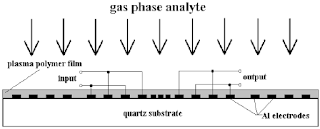The frequency analysis of auditory
perceptions takes place in the cochlea of the inner ear. The cochlea’s task is
to transform the entrance vibrations of the oval window into individual
frequency components of the acoustic signal entering the outer ear. This frequency
analysis is provided by a coupling between the overall acoustic wave in the
perilymph and the vibrations of the basilar membrane.
With regard to the
analyzed transformation of signals, the scala vestibuli, scale tympani, basilar
membrane and organ of Corti are of the highest importance, the latter of which transforms deformations of the basilar membrane into tension pulses that are further conveyed to the relevant part of the brain. The cavities of the scala
vestibuli and scale tympani are filled with the same liquid-perilymph. They are
interconnected with a narrow opening called the helicotrema.




